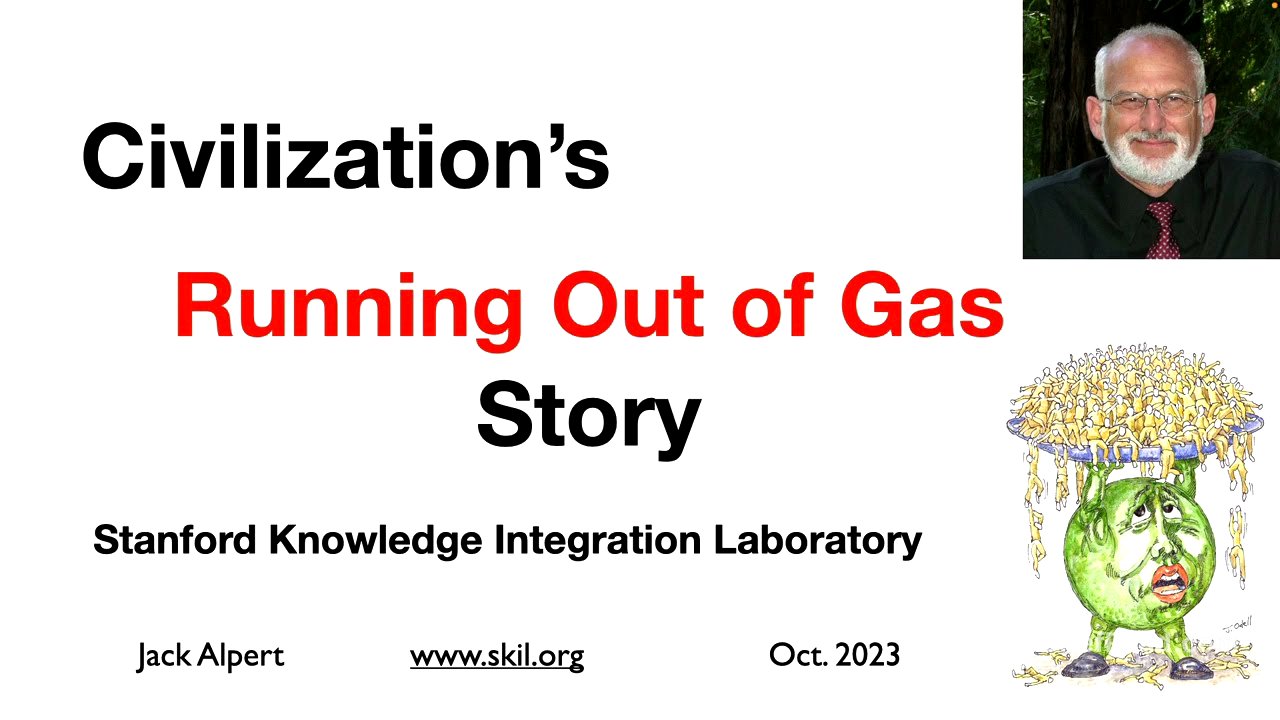TLDR;
This video discusses a dire prediction made in 1972 by MIT researchers regarding the limits to growth and the potential for a catastrophic population die-off due to resource depletion. While technological advancements temporarily averted the predicted crisis, the core issue of reservoir depletion remains. The video explains why this prediction was largely ignored due to limitations in human learning processes, particularly experiential and transmission learning. It advocates for a third learning process based on understanding the flow of mass and energy to infer future events. The video concludes with a stark warning: if energy delivery tasks consume all extracted oil before it reaches agriculture, a massive population decline is inevitable, potentially leading to the death of billions within the century.
- The 1972 MIT study predicted resource depletion leading to a population die-off.
- Technological advancements temporarily masked the problem.
- Human learning limitations hindered the acceptance of the prediction.
- Understanding energy and mass flows is crucial for predicting future events.
- A potential catastrophic population decline is possible if energy resources are exhausted.
Introduction: The Car in the Desert Analogy [0:10]
The video starts with an analogy of a car running out of gas in the desert, which represents the potential fate of global civilization if it depletes its fossil fuel resources. In 1972, an MIT group identified this "running out of gas" event in their data, represented by a red line indicating resource availability. The black line shows the global population's response, initially rising but then declining as resources diminish, potentially leading to 5 billion deaths by 2100.
The Limits to Growth and Initial Criticism [0:41]
The MIT group initially hesitated to report the die-off event due to its distant timeline and the novelty of system dynamics. They focused on food and industrial output per capita, which the simulation showed would stop growing. Their book, "The Limits to Growth," faced criticism, with many believing that technological advancements would prevent these limits. For 50 years, this criticism seemed valid as well-being and population grew beyond the simulation's predictions, thanks to the Green Revolution and advanced energy extraction techniques.
The Unaddressed Die-Off Prediction [3:16]
Despite the initial inaccuracies in timing, the simulation's core suggestion of a die-off due to reservoir depletion remained relevant. This prediction was largely ignored, possibly due to flaws in human information processing. People primarily learn from experience, but the die-off event was both unprecedented and far in the future, making experiential learning ineffective in influencing behavior to avoid it.
The Weakness of Transmission Learning [4:16]
Transmission learning, where experts convey their views, is also insufficient. Historical information lacks examples of die-offs from energy depletion, and differing expert opinions create confusion. The MIT simulation's die-off suggestion couldn't be validated through transmission learning because there was no consensus or clear way for listeners to determine which expert to believe.
Learning Through Flows of Mass and Energy [5:18]
To validate the MIT simulation, the video proposes a third learning process based on understanding the flow of mass and energy. Simple examples illustrate how flows predict future events without direct experience: more flow equals more well-being, an empty tank predicts no flow, and machines wearing out necessitate replacement. These principles can be applied to understand the future of civilizations.
Civilization's Dependence on Energy Flows [6:36]
The video explains how civilization relies on energy flows. Sunlight supports subsistence farming for 600 million people, while fossil fuels power electric plants and internal combustion engines, enabling manufacturing and food production for 8 billion. Manufacturing also creates machines for mining, refining, and pumping, which extract more resources. A portion of the total energy is invested back into the infrastructure, sustaining the system.
The Inevitable Decline [8:00]
The system functions until reservoirs become too dilute, hindering pumping and refining. Fuel storage empties, power plants and engines stop, manufacturing ceases, and energy capture declines. If fusion or dark energy cannot replace lost energy, the Earth can only support 600 million people. This occurs when energy delivery consumes all extracted oil before it reaches agriculture.
The Potential Catastrophe and Population Decline [8:41]
If this scenario unfolds within the next 80 years, the current global population of 8 billion must decline to 600 million. Considering the estimated 8 billion people born in the next 80 years, a total of 16 billion people will live during this century. Subtracting the 2 billion who die of old age leaves 14 billion. If energy flows in 2100 can only feed 600 million, the remaining 13.4 billion will die from starvation or conflict over food, affecting almost everyone alive this century.









